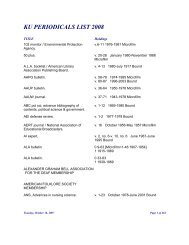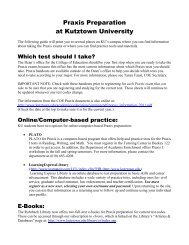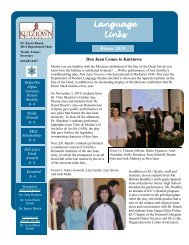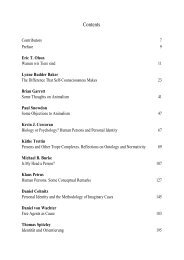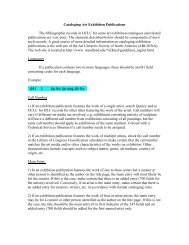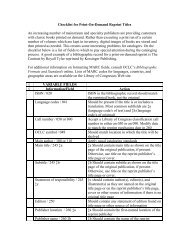Deep-tow magnetic anomaly study of the Pacific Jurassic Quiet Zone ...
Deep-tow magnetic anomaly study of the Pacific Jurassic Quiet Zone ...
Deep-tow magnetic anomaly study of the Pacific Jurassic Quiet Zone ...
You also want an ePaper? Increase the reach of your titles
YUMPU automatically turns print PDFs into web optimized ePapers that Google loves.
B07110<br />
TOMINAGA ET AL.: JURASSIC QUIET ZONE MAGNETIC ANOMALIES<br />
B07110<br />
Figure 5. Plot <strong>of</strong> seismic pr<strong>of</strong>ile and deep-<strong>tow</strong> <strong>magnetic</strong> data. (a) Spatial relationship <strong>of</strong> seismic lines<br />
from MESOPAC II [Lancelot, 1989] and survey lines from this <strong>study</strong>. Solid lines show <strong>magnetic</strong> survey<br />
line in this <strong>study</strong> and dotted lines are lines 6-13 and 10 from MESOPAC II. (b) Line 10 seismic data from<br />
MESOPAC II. Vertical line indicates <strong>the</strong> location <strong>of</strong> Hole 801 C. (c) Line 6-13 seismic data from<br />
MESOPAC II. (d) Seafloor and oceanic basement interpreted from data shown in Figure 5c. (e) 5.5 km<br />
level Line 3-9 <strong>magnetic</strong> line from this <strong>study</strong> shows that <strong>magnetic</strong> anomalies are not correlated to<br />
basement topography.<br />
Hole 801C. We used a pale<strong>of</strong>ield inclination and declination<br />
<strong>of</strong> 10° and 20°, respectively (from Larson and Sager<br />
[1992]) and defined <strong>the</strong> strike <strong>of</strong> <strong>the</strong> <strong>magnetic</strong> anomalies as<br />
135° clockwise from north (from Sager et al. [1998]).<br />
Although Tivey et al. [2006] suggested that <strong>the</strong>re may be<br />
slight directional changes in <strong>anomaly</strong> strikes, we kept this<br />
constant strike because <strong>the</strong> strike changes are uncertain<br />
and this assumption is consistent with previous studies<br />
[Handschumacher et al., 1988; Sager et al., 1998] (also<br />
see sections 3.1, 4.1, and 4.4). Magnetic models require<br />
appropriate values for <strong>the</strong> seafloor depth, sediment thickness,<br />
and thickness <strong>of</strong> <strong>the</strong> <strong>magnetic</strong> source layer. While<br />
seafloor depth is available from <strong>the</strong> DSL-120 side-scan<br />
sonar data, <strong>the</strong> depth <strong>of</strong> igneous basement must be interpreted<br />
from sparse, pre-existing seismic pr<strong>of</strong>iles [Abrams et<br />
al., 1993] and <strong>the</strong> Hole 801C. We were unable to obtain<br />
seismic data along <strong>the</strong> deep-<strong>tow</strong> pr<strong>of</strong>iles during <strong>the</strong> TN152<br />
cruise because <strong>of</strong> time and logistical limitations. For simplicity<br />
in modeling, we used a constant depth for <strong>the</strong><br />
seafloor and sediment thickness within each survey subarea:<br />
5.6 and 6.1 km (seafloor and basement) for <strong>the</strong> M34<br />
survey, 5.6 and 6.2 km for <strong>the</strong> NORTH survey, 5.5<br />
and 5.9 km for <strong>the</strong> H801C survey, and 5.6 and 6.1 km<br />
for <strong>the</strong> SOUTH survey. As shown in Figure 5, changes in<br />
seafloor depth and sediment thickness are mostly gentle, so<br />
<strong>the</strong>se approximations should be reasonable. For reference,<br />
7<strong>of</strong>20



